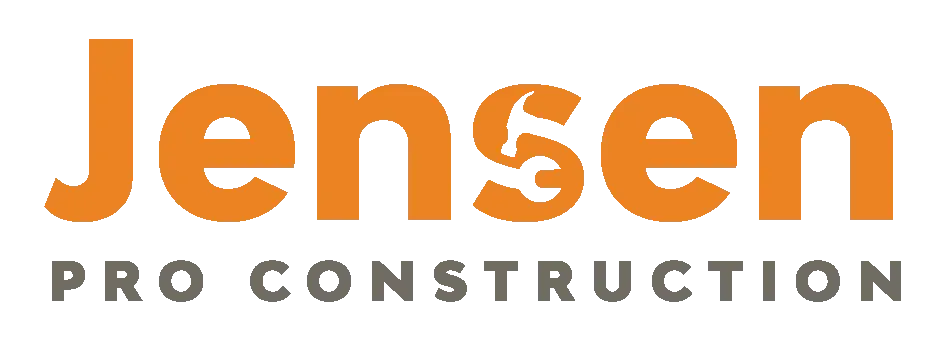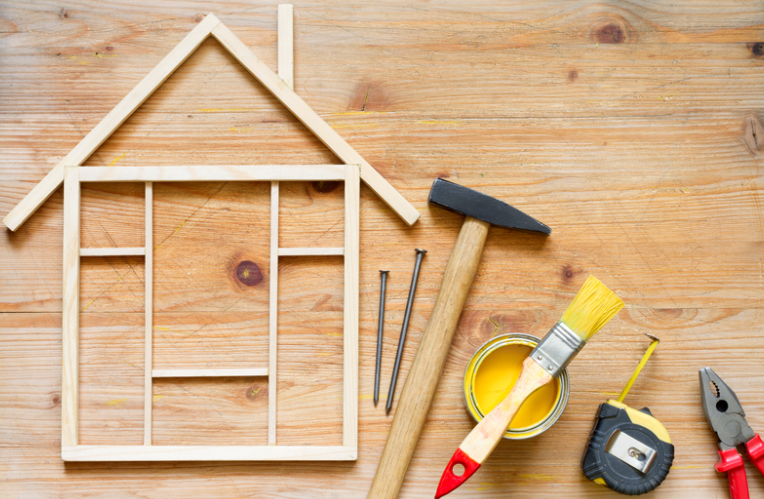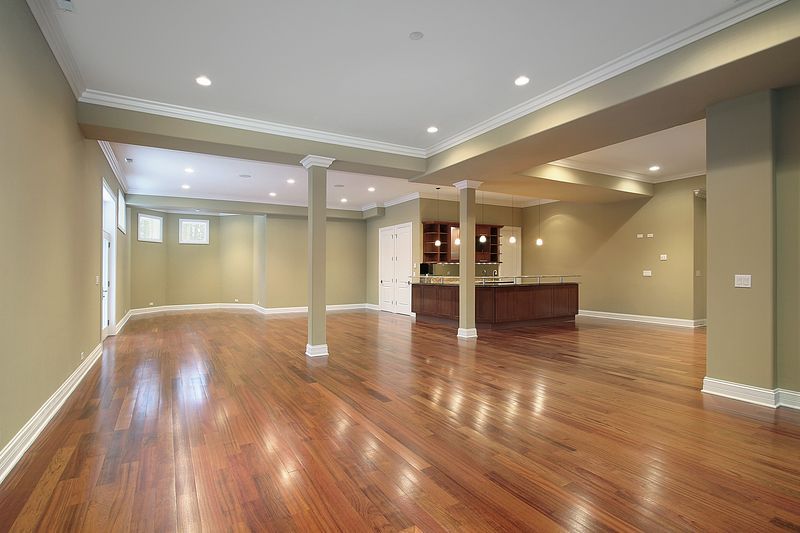Transforming Your Basement into a Child-Friendly Playroom Oasis
April 15, 2024
Safety as the Foundation of Design
Safety is the cornerstone of any child-friendly playroom. When considering the transformation of a basement space, priority must be given to the selection of materials that are non-toxic, durable, and easy to clean. Flooring plays a critical role in a playroom, with soft options such as interlocking foam tiles or carpeting being ideal choices. They provide a cushion for inevitable falls and are available in various colors and patterns that can stimulate a child's imagination.
Wall materials and paints should be equally scrutinized for safety. Opt for zero-VOC (volatile organic compounds) paints
that do not emit harmful gasses, ensuring the air quality is safe for young lungs. Additionally, furniture with rounded corners and hardware that is securely fastened can prevent injury, making it a wise choice for a space designed for rambunctious activity.
Creative Storage Solutions
A harmonious playroom design balances fun and function, with storage solutions being integral to maintaining order and safety. Innovative storage systems can turn chaos into harmony by giving everything a designated place. Shelves with varying heights allow items to be accessible to children and can be anchored to walls to prevent tipping. Clear storage bins are excellent for sorting toys and make it easy for children to find what they're looking for without having to empty the contents onto the floor.
Built-in cubbies provide a permanent solution for larger items, and drawers with safety stops ensure that small fingers aren’t pinched. Art supplies can find a home in rolling carts that can be tucked away when not in use, emphasizing the room's adaptability to various play activities. The storage design should also include room for growth, allowing for the addition of new toys and materials as the child's interests evolve.
Engaging Design Themes
Beyond functionality, a playroom should be an inspiring space that captures a child's imagination. Design themes can vary from enchanted forests and outer space adventures to storybook fantasies, each creating a backdrop for imaginative play. Wall murals, decals, and themed furniture can set the stage for these adventures. However, the room's theme should not be so specific that it restricts the room's evolution with the child's changing tastes.
A flexible approach to thematic design can be achieved by incorporating elements that can be easily changed, such as removable wall art and adaptable furnishings. A chalkboard wall or a section covered with whiteboard paint invites endless creativity and can be updated according to the playroom's theme. This approach allows the space to grow and change without requiring a complete overhaul.
Designing for Growth and Adaptability
A child's playroom should be designed with foresight, taking into account the inevitable progression from toddler to teen. Furniture that is modular and can be repurposed is an investment in the longevity of the room. For example, benches with storage can later be converted into seating for a study area. Adjustable shelving grows with the child’s needs, offering storage for toys in the early years and books and electronics later on.
Flexible lighting fixtures with dimmer switches can adapt to different activities and times of day, while also providing sufficient light for reading and homework as the child matures. Incorporating an area that can transition into a media or gaming zone is another way to ensure the playroom remains relevant and enticing.
Comfortable Spaces for Adult Supervision
While the focus of a playroom is the child, it also needs to be a place where adults feel comfortable supervising and interacting. Including a seating area for adults within the playroom design is essential. This area can double as a space for reading stories, guiding art projects, or simply being present while children play independently. Comfortable seating that complements the room's aesthetic will encourage adults to spend time in the playroom, fostering family interaction.
Additionally, integrating technology in a way that allows for the monitoring of activities can be discreet and efficient. For instance, a small workstation with a computer or tablet can enable adults to work while still being accessible to the children.
The Importance of Lighting and Acoustics
A basement playroom requires special attention to lighting and acoustics, given its location within the home. Recessed lighting and wall sconces provide an even distribution of light and avoid harsh shadows that could hinder play activities. Incorporating natural light, when possible, through egress windows can brighten the space and provide a vital connection to the outdoors.
In terms of acoustics, the playroom should be a space where noise is managed rather than eliminated. Sound-absorbing materials such as carpeting, wall fabrics, and acoustic tiles can help dampen noise, ensuring that the exuberance of play does not disrupt the entire household. These materials can be integrated into the space in a decorative manner, serving the dual purpose of form and function.
A basement playroom is a dynamic space that provides children with a private world for exploration and fun. By prioritizing safety, creativity, and functionality, it can become a cherished space that evolves to meet the needs of growing children. With thoughtful planning and a touch of innovation, the basement can transform into a playroom oasis that is both engaging for children and welcoming for adults. As families embark on this journey, the end result is a versatile and enchanting environment that enhances the richness and enjoyment of home life.
Transform your basement into a dream playroom with Jensen Pro Construction's expert design and remodeling services. Don't wait to give your family the perfect area for fun, learning, and growth. Contact us today
to see how we can bring your vision to life. Let's create a space where your child's imagination can soar!
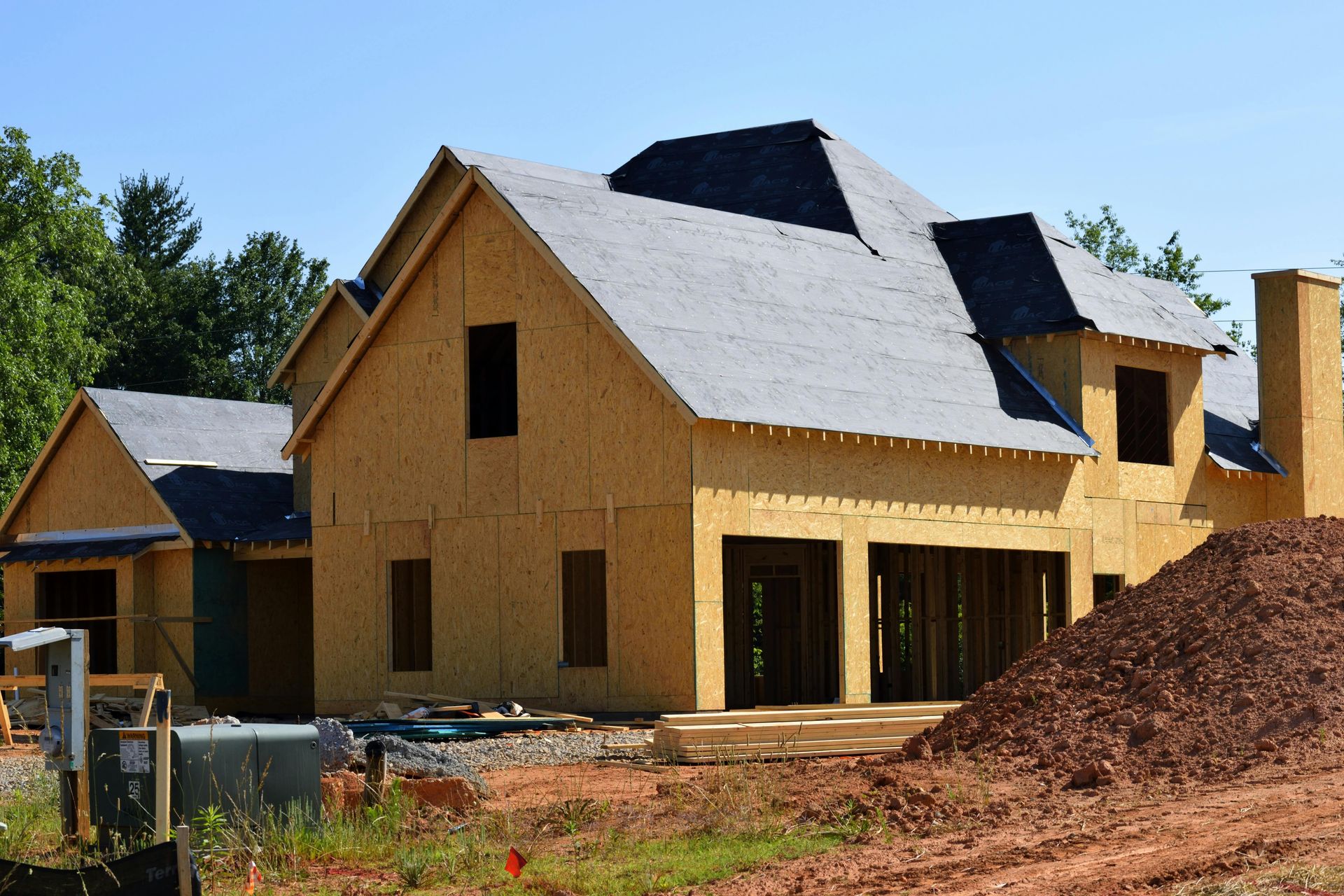
Seamlessly blending style and functionality has always been the core of a remarkable home renovation. Today, however, there’s a new level of possibility as innovative technologies open doors to smarter, greener, and more personalized remodeling projects. Whether you’re planning a simple kitchen update or a complete home transformation, technological advancements are ushering in an era of elevated designs and seamless communication between contractors and homeowners—leading to renovations that don’t just meet expectations, but exceed them. Below, we’ll dive into a few key areas—smart home systems, project planning tools, and virtual design apps—that are redefining the standards of what’s possible in home renovations. Smart Home Systems: Transforming Everyday Living The appeal of living in a connected home is growing year by year. In fact, the global smart home market is projected to expand significantly in the coming years, reaching an estimated value of over 231 billion US dollars by 2028. The driving force behind this growth is the desire for convenience, security, and energy efficiency. From intelligent lighting to smart thermostats, integrating these technologies into a renovation helps create an environment that is both inviting and efficient. Voice-controlled lighting: Imagine walking into a newly renovated living room and simply saying, “Dim the lights,” to set the perfect movie-watching ambiance. These systems can also track energy usage, prompting more conscious consumption patterns. Smart security solutions: High-definition video doorbells and motion-detecting cameras keep you informed with real-time updates. Beyond security, these tools can make daily life easier: you can see who’s at your door while you’re cooking dinner or greet guests remotely if you’re running late. Energy management: Modern systems can detect peak energy usage times and automatically adjust device settings, lowering overall costs. Focus on these upgrades during a renovation, and you’ll reap the rewards for years to come. Incorporating smart devices strategically ensures that the tech doesn’t just blend with new designs—it boosts the comfort and efficiency of each space. When planned during the renovation phase, wiring and device placement can be seamlessly integrated behind walls, making the final result stylish and functional. Digital Project Planning Tools for Streamlined Renovations Keeping a renovation on track involves more than just a hammer and nails: effective communication and organization are crucial. Tech-based project planning tools have become game-changers by allowing homeowners and contractors to collaborate in real time, track budgets, and maintain clear timelines. Online collaboration platforms: These platforms let everyone view tasks, share progress photos, and resolve issues quickly—no phone tag required. By centralizing project documents and updates, they keep misunderstandings at bay and reduce unnecessary delays. Budget-tracking software: Renovations can be stressful when costs begin to creep higher than anticipated. Having an integrated budget tracker lets you monitor spending and manage contingencies, ensuring you stick to your desired financial plan. Virtual check-ins: Thanks to video calls and progress-monitoring apps, your renovation process can be as interactive—or hands-off—as you prefer. This flexibility means you can maintain control and stay connected without having to be on-site constantly. These tools ultimately bridge the gap between you and your contractors, promoting transparency so that the final project truly aligns with your original vision. Virtual Design Apps and AR: Visualizing Your New Space Gone are the days of relying solely on 2D sketches or imagining the “what ifs?” of a floor plan. Virtual design apps and augmented reality (AR) solutions let you visualize everything—from color palettes to furniture arrangements—before you commit. For example: Room layout previews: Experiment with different furniture arrangements to see how they’d fit into your new space without lifting a single piece of furniture. Color scheme simulations: Play with paint colors, flooring materials, and décor selections on a screen. Adjusting a color with a simple swipe can save you from expensive repainting later. Augmented Reality walk-throughs: Step into a vacant room and use AR devices to see an entirely finished space right before your eyes. These interactive experiences provide clarity and help homeowners feel confident in their ideas. With the right apps, you can adjust designs, swap out cabinets, or try new tile patterns in seconds—making sure every detail is polished before the first nail is hammered. Embracing the Future of Renovations Technological solutions are helping break barriers in the renovation world. They: Enhance communication and planning, reducing budget misalignments and scheduling issues. Offer homeowners confidence by providing clear visualizations and transparent decision-making options. Promote sustainability by making it easier to monitor energy consumption and environmental impacts. Sustainability, in particular, is on the rise. New materials, smart appliances, and home automation systems can substantially lower energy use , benefiting both your monthly bills and the planet. This forward-thinking approach not only boosts immediate comfort but also future-proofs your home against evolving renovation trends. Ready to Redefine Your Renovation Journey? If you’ve been inspired to integrate the latest technology into your remodeling plans, our team at Jensen Pro Construction is here to help turn your vision into reality with expertise, reliability, and modern sensibilities. From planning and design to installation and finishing touches, we ensure that every part of the process reflects the latest in renovation innovation. When you're ready to take the next step, contact us to schedule a consultation or request more information. Embrace the future of home renovations—one smart, seamless, and stylish upgrade at a time.

Basements are no longer dark, underutilized spaces in homes. In 2025, they are evolving into modern, functional living areas that reflect cutting-edge design and advanced functionality. Here are the top ten basement renovation trends that homeowners should consider for their upcoming projects. Innovative Lighting Solutions One of the key trends in basement renovations is the use of innovative lighting solutions. Modern LED systems, ambient lighting, and automated controls can transform the basement's ambiance and functionality, creating a space that is both inviting and practical. Flooring That Combines Style and Durability New flooring options are being developed specifically for moisture-prone basement environments. Engineered materials that marry design with practicality are gaining popularity, offering homeowners a combination of style and durability for their basement floors. Eco-Friendly Materials and Sustainable Practices The use of recycled, low-VOC, and renewable building materials is another trend in basement renovations. By incorporating eco-friendly materials and sustainable practices, homeowners can not only benefit the environment but also achieve long-term energy savings in their homes. Multi-Purpose Spaces for Modern Lifestyles Creating versatile areas in the basement that can serve as home gyms, offices, or entertainment zones is a growing trend. By designing multi-purpose spaces, homeowners can make the most of their basement square footage and adapt to their evolving lifestyle needs. Moisture Management and Waterproofing Technologies Preventing dampness, mold, and water intrusion is essential in basement renovations. The latest moisture management and waterproofing technologies are being used to maintain a dry, healthy environment in basements, ensuring the longevity of the renovation. Enhanced Egress and Safety Code Innovations Updated egress windows and compliance with modern safety codes are crucial in basement renovations. Innovations in fire safety and escape routes are maximizing basement usability without compromising safety, providing homeowners with peace of mind. Acoustic and Soundproofing Advancements For homeowners looking to create home theaters or quiet workspaces in their basements, new sound insulation materials and design techniques are essential. Achieving superior sound control in multi-use areas is possible with the latest acoustic and soundproofing advancements. Smart Home Integration Tailored for Basements Adapting climate control, security systems, and automated lighting for below-grade environments is a growing trend. Integrating smart home technology in basements can enhance convenience and energy efficiency, providing homeowners with a modern and connected living space. Innovative Storage and Space-Optimization Solutions Maximizing limited space in basements with innovative storage and space-optimization solutions is a key trend. Built-in storage, hidden cabinetry, and clever design concepts can help homeowners stay organized without compromising the aesthetics of their basement. Cost Management, Financing, and ROI Strategies Budgeting essentials and insights into the latest financing options for basement renovations are crucial for homeowners. Analyzing trends that offer the best long-term value and increased home equity can help homeowners make informed decisions about their renovation projects. In conclusion, these top ten basement renovation trends for 2025 are reshaping how homeowners approach basement renovations. By incorporating innovative design, advanced technology, and sustainable practices, homeowners can transform their basements into modern, functional living spaces. For personalized consultations and expert advice on basement renovations, contact Jensen Pro Construction today. Explore more renovation ideas and success stories on Jensen Pro Construction's blog .
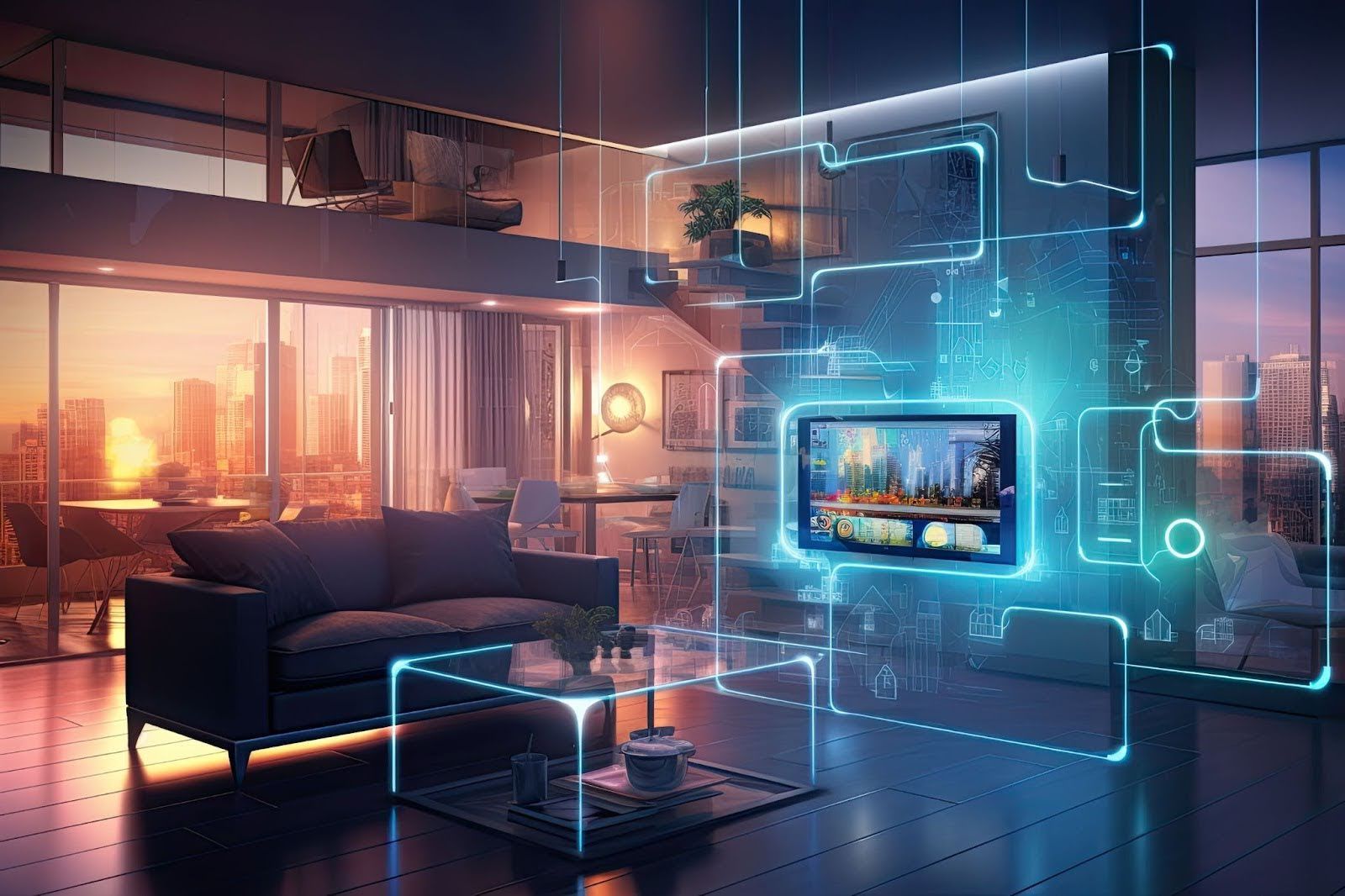
In recent years, smart home technology has gained significant traction, becoming a popular choice in home renovations. This trend reflects a growing desire for increased convenience, energy efficiency, and enhanced living experiences. Homeowners are integrating smart devices to automate daily tasks, reduce energy consumption, and improve their overall quality of life. According to a 2022 report by Statista , the global smart home market was projected to reach over $53 billion, illustrating the significant growth and widespread adoption of these technologies at that time. This figure serves as a testament to the market's strength and its continued expansion in the years since. To explore this growth further, delve into specific smart home technologies that are transforming modern renovations, highlighting their benefits and practical applications for homeowners. Smart Thermostats: Enhancing Comfort and Efficiency Smart thermostats are a prime example of technology that can both improve comfort and reduce energy costs. These devices learn user habits to optimize heating and cooling schedules, ensuring a comfortable home environment while minimizing energy usage. Popular brands like Nest, Ecobee, and Honeywell offer features such as remote access via smartphone apps, integration with other smart home systems, and energy usage reports. By adjusting temperature settings based on occupancy and preferences, smart thermostats can lead to significant savings on energy bills, potentially reducing heating and cooling costs by up to 10–15% . Additionally, homes equipped with smart thermostats often see an increase in resale value due to their appeal to tech-savvy buyers. Intelligent Lighting Solutions for Modern Homes Smart lighting systems, including bulbs, switches, and dimmers, offer homeowners the ability to customize lighting to suit their needs and preferences. These systems can be controlled through smartphone apps or voice commands, providing convenience and flexibility. Smart lighting not only enhances energy efficiency by allowing precise control over light usage but also enables users to create specific ambiances for different occasions. Innovative products like Philips Hue and LIFX offer a wide range of options, from color-changing bulbs to automated lighting schedules, making it easier than ever to transform a home's lighting landscape. Upgrading Home Security With Smart Systems Smart security systems are transforming the way homeowners protect their properties. Components such as cameras, doorbells, and alarms offer real-time alerts and remote monitoring, providing peace of mind and enhanced safety. These systems allow users to monitor their homes from anywhere, ensuring that they are always aware of any potential security threats. In Utah, homeowners should be mindful of local regulations regarding security camera installations, ensuring compliance while benefiting from increased security measures. The Role of Smart Appliances in Modern Kitchens The integration of smart appliances in kitchen renovations is revolutionizing the way people cook and manage their households. Smart refrigerators, ovens, and dishwashers offer features like energy efficiency, remote operation, and personalized settings. For example, a smart oven can be preheated from a smartphone, while a smart refrigerator can provide inventory updates and suggest recipes based on available ingredients. These appliances streamline daily tasks, making kitchen management more convenient. However, homeowners should consider potential challenges such as compatibility with existing systems and the initial investment cost when upgrading to smart appliances. Incorporating Smart Entertainment Systems Smart entertainment systems, including smart TVs and speakers, offer seamless streaming and voice control, enhancing the home entertainment experience. A strong Wi-Fi network is crucial to support these devices, ensuring uninterrupted streaming and connectivity. Integrating smart entertainment systems into existing home setups can be straightforward, with options to connect devices wirelessly or through home automation platforms. Brands like Samsung, LG, and Sonos provide a range of products that cater to diverse entertainment needs, allowing homeowners to enjoy a personalized and immersive experience. The Impact of Smart Technology on Home Resale Value Smart home technology can significantly enhance a property's appeal to potential buyers. Features such as smart thermostats, security systems, and lighting solutions are particularly attractive in the real estate market. According to a report by Zillow , homes with smart features tend to sell faster and at higher prices compared to those without. This increased demand for smart-enabled homes underscores the importance of incorporating technology into modern renovations. Practical Considerations and Challenges in Smart Renovations While the benefits of smart home technology are clear, homeowners may face challenges when integrating these systems. Compatibility issues, installation costs, and the complexity of managing multiple devices can be daunting. It's important to plan thoroughly and consult with professionals to ensure a seamless integration process. Homeowners in Utah can access local resources and experts to assist with smart home renovations, ensuring they choose the right technology based on individual needs and budget constraints. Smart home technology continues to evolve, offering innovative solutions for modern living. By understanding the various options and potential challenges, homeowners can make informed decisions that enhance their homes and improve their quality of life. Smart home technology is transforming modern renovations, offering homeowners enhanced convenience, efficiency, and security. Jensen Pro Construction, with expertise in home renovations, can play a vital role in helping clients seamlessly incorporate these innovative features. Ready to bring smart technology into your home renovation? Contact Jensen Pro Construction today for a consultation and take the first step towards a smarter, more connected home.
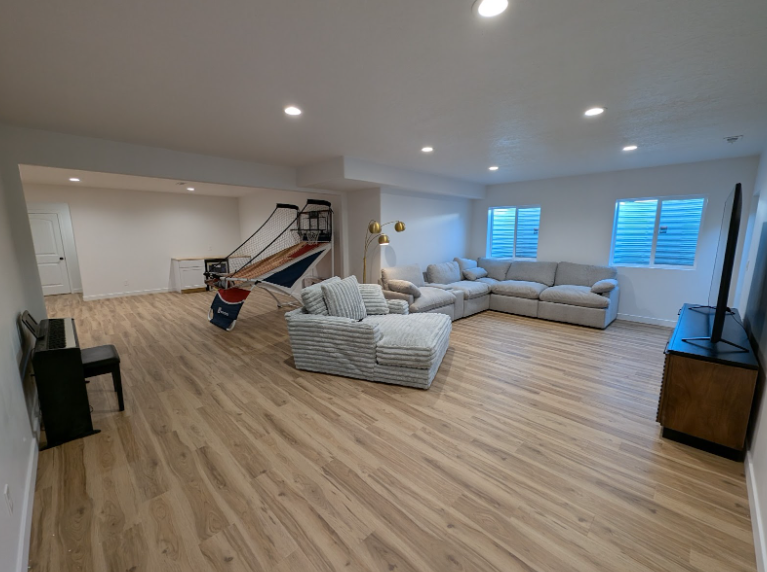
The open floor plan concept has redefined modern architecture, offering innovative solutions for both residential and commercial spaces. This design approach minimizes the separation between living areas, promoting a more communal and adaptable environment. Over the years, it has gained popularity due to its ability to cater to contemporary lifestyles that value connectivity and flexibility.

Home renovations and upgrades are exciting yet challenging endeavors that require careful planning and execution. At the center of a successful renovation is the selection of the right contractor. This choice can dramatically influence the project's outcome, affecting both the quality and the timeline. A competent and reliable contractor can turn your vision into a reality, ensuring that every aspect of the project aligns with your expectations. Conversely, an inexperienced or unreliable contractor can lead to delays, budget overruns, and substandard workmanship, jeopardizing both your investment and peace of mind.
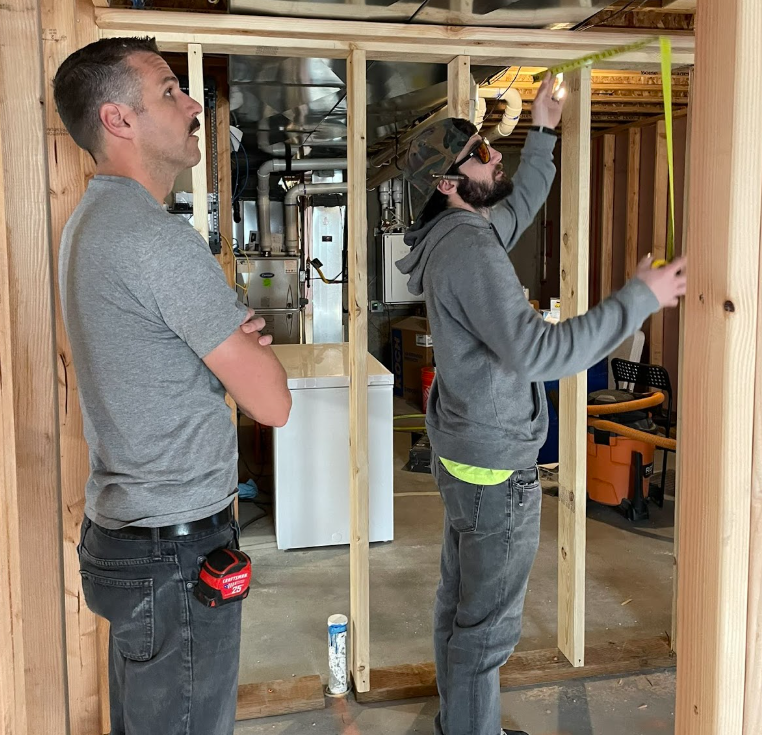
Home renovation can transform your living space, increasing both functionality and market value. However, without proper planning and execution, the process can become overwhelming. This guide will walk homeowners through the typical stages of a home renovation project, highlighting key considerations such as establishing a clear project scope, setting realistic timelines, and ensuring effective communication with your contractor for a smooth renovation journey.
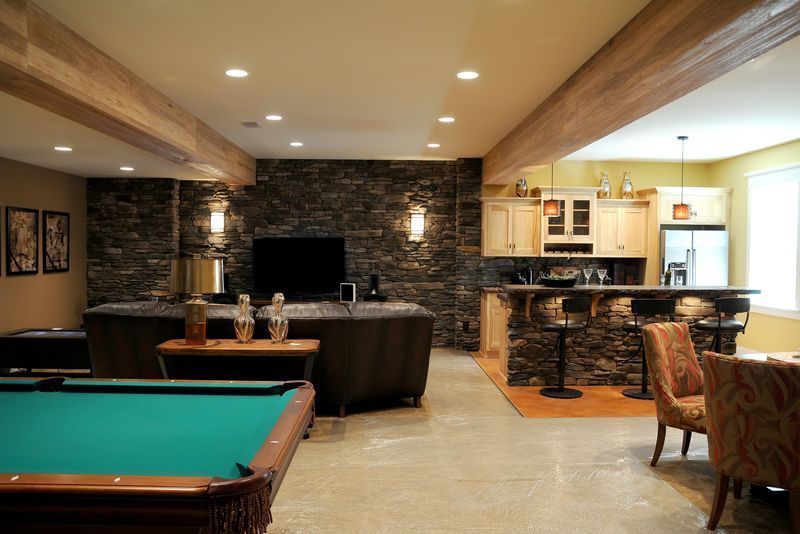
Transforming a basement into a multi-functional space is a trend that has gained momentum among homeowners looking to enhance the usability and value of their homes. Integrating a kitchenette into your basement design not only adds convenience but also increases its appeal as an entertainment hub. This guide will explore how to select compact appliances, incorporate functional storage, and devise creative layout plans to craft a practical yet stylish kitchenette tailored to complement the overall aesthetic of your basement.
